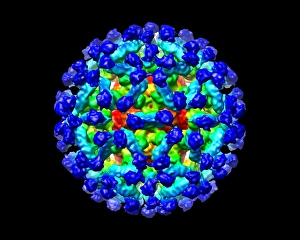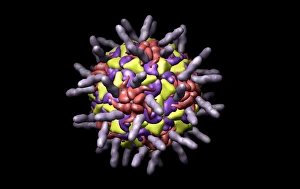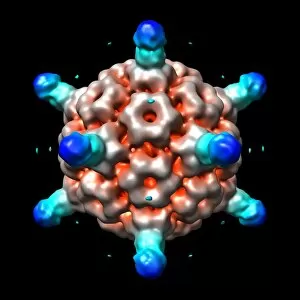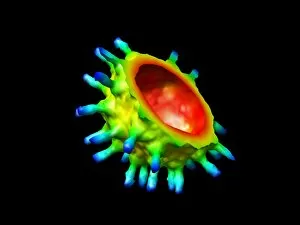3 D Visualisation Collection
"Unlocking the Microscopic World
All Professionally Made to Order for Quick Shipping
"Unlocking the Microscopic World: 3D Visualisation Reveals Intricate Details of Viruses and Antibodies" Step into the realm of cutting-edge scientific research as 3D visualisation takes us on a journey through the microscopic world. Using advanced computer models, scientists have delved into the intricate structures of various viruses and their interactions with antibodies. One such breakthrough is Bacteriophage phi29, where a computer model has unraveled its complex architecture. This virus, known for infecting bacteria, showcases its unique shape and components in stunning detail. Simian immunodeficiency virus (SIV), closely related to HIV, has also been brought to life through 3D visualisation. By mapping out its structure, researchers gain valuable insights into potential targets for antiviral therapies. In another fascinating study, Murine norovirus with antibody fragments reveals how these tiny proteins bind to specific regions of the virus. This knowledge paves the way for designing more effective treatments against this common cause of gastroenteritis. Continuing our exploration, we encounter Cucumber necrosis virus and Human rhinovirus – both meticulously recreated using computer models. These representations offer invaluable information about their structural intricacies that can aid in developing targeted interventions against plant diseases and respiratory infections respectively. The captivating Ribgrass mosaic virus comes next; its detailed computer model provides clues about how it interacts with host plants at a molecular level. Understanding these mechanisms could potentially lead to strategies for crop protection against viral pathogens. Human rhinovirus returns but this time accompanied by antibodies - an exciting development in combating common colds. The interaction between these two entities is now better understood thanks to 3D visualisation techniques, opening doors towards novel therapeutic approaches. Bacteriophage P22 follows suit as another example where computational modelling sheds light on its inner workings. With further investigation into this bacterial predator's structure and function, new avenues may emerge for combating antibiotic-resistant bacteria.













